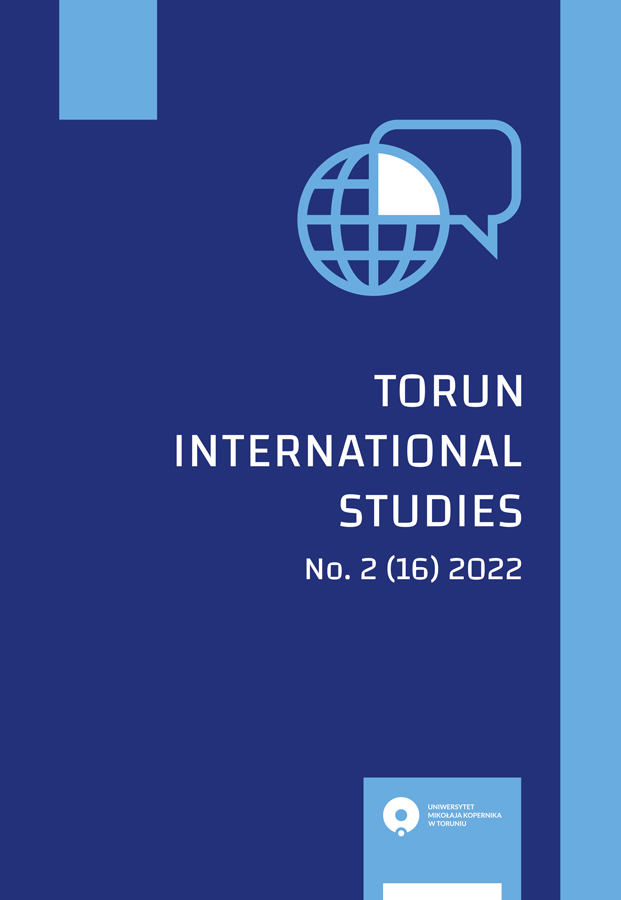THE NEED FOR THE EUROPEAN UNION ARMY/ ON ARMED FORCES
DOI:
https://doi.org/10.12775/TIS.2022.013Keywords
European Army, European defence integration, joint European Armed Forces, European Battle GroupAbstract
The Joint European Army has been a topic of discussion in the European Union in recent months. The idea of a common European army goes back to the beginnings of European integration within the mainstream of integration, which resulted in its current form of the European Union. After the end of World War II, the idea of creating a joint forces do defend Europe became very topical. The result was a proposal to sign the Brussels Treaty (its signatories were France, Great Britain, and the Benelux coutries) in March 1948, in response to the growing influence of expansion of the Soviet Union and the countries of the Eastern Europe. Subsequently, it was the Schuman Declaration of 1950, which resulted in the European Coal and Steel Community (ECSC). The idea of creating a joint European army was renewed at the highest political level under the influence of several factors, in the form of speeches by a top German politician (former German Chancellor Angela Merkel), France (French President Emmanuel Macron), and the European Commission (former European Commission President Jean-Claude Juncker), who, however, did not offer its specific form or time interval. Therefore, the idea remains abstract. The authors of the article, based on a historical analysis of the needs for building a joint European army and the requirements of the present, also in relation to the current Russia-Ukraine conflict, point to the need to create an institution in Europe (e.g., a joint European military forces) ensuring peace and security. In general, the authors of the article are of the opinion that the need to address the problem of the European Union’s defence integration is highly topical and could help Europe by becoming a major global player in ensuring peace and security in the world.
References
Bouška, T. (2003). Změny strategické koncepce Severoatlantické aliance po pádu Železné opony. Asociace pro mezinárodní otázky. http://www.amo.cz/publikace/zmeny-strategicke-koncepce-severoatlanticke-aliancepo-padu-zelezne-opony.html.
Európska komisia. (2017). Biela kniha o budúcnosti Európy: Úvahy a scenáre pre štáty EÚ-27 k vývoju do roku 2025. https://ec.europa.eu/info/sites/default/files/biela_kniha_o_buducnosti_europy_sk.pdf
Európska Komisia. (2017). Diskusný dokument o budúcnosti európskej. https://ec.europa.eu/info/sites/default/files/reflection-paper-defence_sk.pdf
European Commission. (n. d.) The elements of a European security and defence union: Three scenarios. https://knowledge4policy.ec.europa.eu/visualisation/elements-european - security-defence-union-three-scenarios_en
Frank, L. (2002). Bezpečnostní politika. In P. Zeman (Ed.), Česká bezpečnostní terminologie, výklad základních pojmů. Ústav strategických studií Vojenské akademie v Brně.
Hoscheková, D. (2011). Bezpečnostné komplexy- bezpečnosť na európskom kontinente. Fakulta politických vied a medzinárodných vzťahov.
Ivančík, R. (2013). Teoretické a terminologické východiská pre kumanie mierových operácií. Politické vedy, 16(1), 30-57.
citations armee europeenne—Citations & Proverbes sur armee europeenne. (n.d.). Dicocitations. https://www.dicocitations.com/citation.php?mot=armee_europeenne
Juncker: NATO is not enough, EU needs an army. (2015, March 9). Euractiv. https://www.euractiv.com/section/global-europe/news/juncker-nato-is-not-enough-eu-needs-an-army/
Karabová, D. (2015, June 14). Prekážky v budovaní spoločnej európskej armády. Európsky Dialóg. https://europskydialog.eu/2015/06/14/prekazky-v-budovani-spolocnej-europskej-armady/
Kazanský, R. (2013). Súčasné problémy výskumu medzinárodných konfliktov a kríz a ich riešenia. Belianum.
Kulíšek, J. (2007). Vojenské rozhledy—Battle Group. https://vojenskerozhledy.cz/kategorie/battle-group
Labuzík, M., & Olak, A. (2013). Európska únia – vybrané témy. Wyższa Szkoła Biznesu i Przedsiębiorczości.
Lipková, Ľ. (2011). Európska únia. Sprint dva.
Macron vyzývá k vytvoření evropské armády. Má být schopna reagovat na agresi Ruska, Číny, ale i USA. (2018, November 12). euractiv.cz. https://euractiv.cz/section/evropska-unie-a-svet/news/macron-vyzyva-k-vytvoreni-evropske-armady-ma-byt-schopna-reagovat-na-agresi-ruska-ciny-ale-i-usa/
Majer, M., & Masariková, M. (2016). Je spoločná európska armáda reálnym projektom? SME Komentáre. Retrieved from https://komentare.sme.sk/c/20279810/je-spolocna-europska-armada-realnym-projektom.html
MOSR. (n.d.). PESCO: Ministerstvo obrany SR. https://www.mosr.sk/46746-sk/pesco
PESCO. (n.d.). About PESTO. Retrieved from https://www.pesco.europa.eu/about/
Rusiňák, P. (2006). Historia_eur.integracie. FMV. [online] http://www.societas.cz/societas4/eu1.htm/
Treaty of Lisbon amending the Treaty on European Union and the Treaty establishing the European Community, signed at Lisbon, 13 December 2007, 306 OJ C (2007). http://data.europa.eu/eli/treaty/lis/sign/eng
Treaty on European Union (TEU) / Maastricht Treaty. European Parliament. https://www.europarl.europa.eu/about-parliament/en/in-the-past/the-parliament-and-the-treaties/maastricht-treaty
Downloads
Published
How to Cite
Issue
Section
License
Copyright (c) 2022 Vojtech JURČÁK, Peter POLÁČEK

This work is licensed under a Creative Commons Attribution-NoDerivatives 4.0 International License.
Stats
Number of views and downloads: 735
Number of citations: 0



